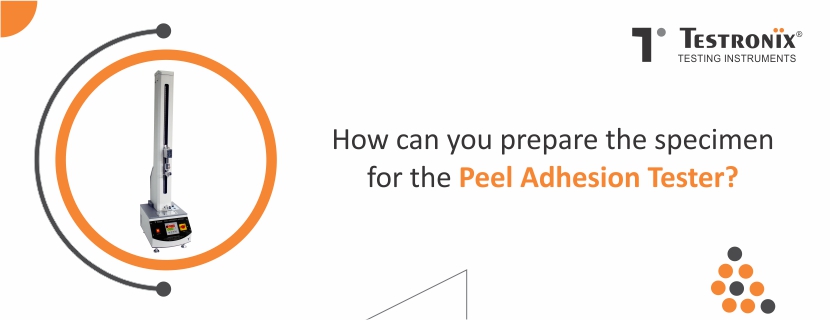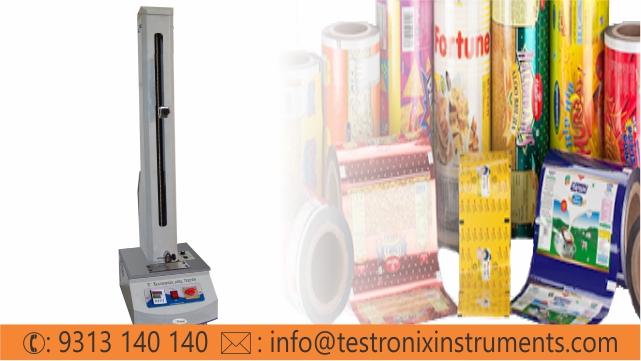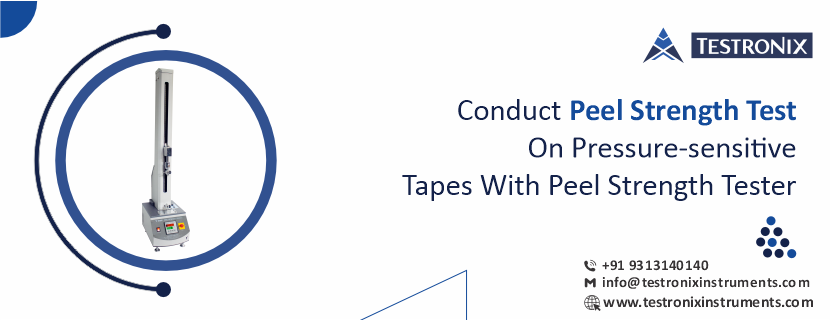Adhesive bonding is an important part of modern manufacturing for industries ranging from packaging and automotive, aerospace and electronics to construction. The integrity of an adhesive joint—from the laminate of flexible packaging to the rubber-metal seals used in vehicles—will determine the final product’s performance and safety. The various recognized standards, one of which is ASTM D903, define standardized test procedures that ensure such bonds meet performance expectations.
What is ASTM D903 Standard for Peel Testing
ASTM D903 is the specification for the peel or stripping strength of adhesive bonds and outlines a systematic approach to measuring the peel resistance of adhesive bonds between flexible and rigid substrates. This test is intended to assess the performance evaluation of the adhesive as it resists separation under a peel force applied at a constant rate.
Scope of ASTM D930 Standard for Peel Testing
ASTM D903 presents a standard test method for measuring the peel or stripping strength of adhesive bonds created between a flexible material and a stiff or flexible substrate. This test method is designed to measure the force required to peel the bonded material at 180 degrees.
This test method applies to assessing the performance of products that are provided with an adhesive backing, such as tape, labels, and waterproofing. The standard specifies a series of parameters for carrying out the test, including specimen preparation, environmental conditioning, peel angle, and rate of separation.
Importance of ASTM D903 Standard & Why We Need It
ASTM is an international standard that is frequently used to measure and analyze the adhesive bonds in industries. This standard describes the testing method to measure the peeling and stripping strength of materials used for different purposes, including plastic films, adhesive labels, waterproofing, and more. The following are the importance of ASTM D903 in different industries:
Ensures quality and consistency
A standard allows a consistent method of testing under defined conditions, for example, a 152 mm/min peel rate and a 180-degree peel angle. The standard ensures that the results will be consistent, regardless of the lab producing them or whether the testing was done on the first production run or the 80th production run.
Evaluates adhesive performance
It measures how well adhesives perform in real-life situations, such as dealing with stress during shipping. It does this by calculating the average force required to pull them apart.
Product development
The manufacturing company uses this test to compare its various adhesive formulations against other options with superior properties. Tapes with a higher peel strength will produce better performance and less product damage.
Assists in compliance
This standard helps manufacturers meet quality control requirements. It also supports them in creating safer, more reliable products for users.
ASTM D903 Test Method—Steps in Detail
The ASTM D903 Test Method consists of several steps, such as specimen preparation, conditioning, test setup, peeling & data collection, and analysis & reporting. Here is the detailed description of these steps:

Specimen Preparation
At this point, a flexible bond will be attached to a rigid or semi-rigid substrate using a permanent adhesive. The sample will be cut into one-inch-wide strips so that they fit properly for bonding and alignment purposes. It is important to pay attention to surface preparations, adhesive application, and adhesive curing to ensure that this step yields accurate and reproducible values.
Conditioning
The prepared test samples are then subjected to laboratory conditions of controlled conditions, usually at 23 +/- 2°C temperature and 50 +/- 5% relative humidity, for at least 24 hours to condition the adhesive and substrates and remove any residual stress or moisture effect that would influence the performance properties of the adhesive.
Test Setup
Mount the conditioned specimen in the peel strength tester or universal testing machine. Secure one end of the flexible adhesive in the upper grip and then secure the rigid substrate in the lower grip. Set up the experiment to achieve a 180° peel angle and ensure alignment for the application of loading.
Peeling and Data Collection
The test begins as the machine pulls the flexible adherend at a constant crosshead speed, typically 152 mm/min (6 in/min). The equipment continuously records the force required to peel the flexible material from the substrate. Data is collected throughout the peeling length to evaluate the adhesive’s resistance to separation under controlled conditions.
Analysis and Reporting
After the force data has been recorded, it is then analyzed to determine the average peel strength in force per unit width (N/m or lb/in). This data will include specimen type, adhesive type, environmental conditions, and the mode of failure (adhesive, cohesive or substrate).
Benefits of Conducting the ASTM D903 Test for Adhesive Bonds
The test to ASTM D903 has several advantages in research, quality assurance, and production.
Quantifiable Adhesion Performance
The ASTM D903 test provides the companies with quantifiable data regarding the strength of an adhesive bond with the peeled material, which will enable the user to observe the adhesive's capacity to bond with a substrate. The ASTM D903 test determines the quantity of force required to separate bonded materials. Repeatability of this testing procedure is useful in guaranteeing the quality of products created, promoting the use of different adhesives to be compared, and finally making decisions regarding development informed by the results.
Improved Process Control
Performing the ASTM D903 test enables manufacturers to gauge and ensure that bonding effectiveness remains consistent through the manufacturing process. Raising identification of differences in bonding strength early allows for responsive changes in application parameters, curing conditions, or materials. This ensures stable manufacturing processes, lower defect rates, and more reliable product performance overall.
Improved Product Reliability
The ASTM D903 test is used to ensure that the bonds using adhesives will maintain the required strength and reliability in the field. It enables the manufacturers to have a constant peel strength to ensure that they avoid bond failures, enhance durability, and keep their product as a long-lasting alternative. The net effect of this is more customer satisfaction, a lower rate of returns, and confidence in the quality and performance of the product.
Validation for Certification and Standards Compliance
By conducting ASTM D903 tests, manufacturers can demonstrate that their adhesive products meet a specification and comply with government or other regulations. Validation of results is key for credentials and credibility with the customer. In addition, it ensures manufactured products meet accepted international quality standards in the global marketplace and in critical applications in the industrial adhesive space.
Supports R&D and Product Comparison
The ASTM D903 test provides expected quantitative data that can help research and development departments compare new adhesive formulations or materials. This test allows a researcher to compare different products or bonding processes to identify enhancements in performance and improvements in formulations. Hence, accelerate development while knowing that new adhesives will meet strength and quality standards.
Cost and Risk Reduction
By catching weak or inconsistent adhesive bonds early with the ASTM D903 test, manufacturers can prevent costly product failures, recalls, and rework. Proper and consistent testing also reduces production or manufacturing waste. This improves efficiency in the manufacturing process and limits liabilities resulting from having a poor bonding performance, leading to savings for the material cost and possibly warranty costs.
Conclusion
The peel strength test via ASTM D903 is one of the most reliable and accepted methods with respect to determining the strength of an adhesive bond worldwide. It offers vital details about the material and this information pertains to the performance of the adhesive under peeling stress. Overall, ASTM D903 enables manufacturers to ensure quality during material optimization and secure compliance with international standards.







